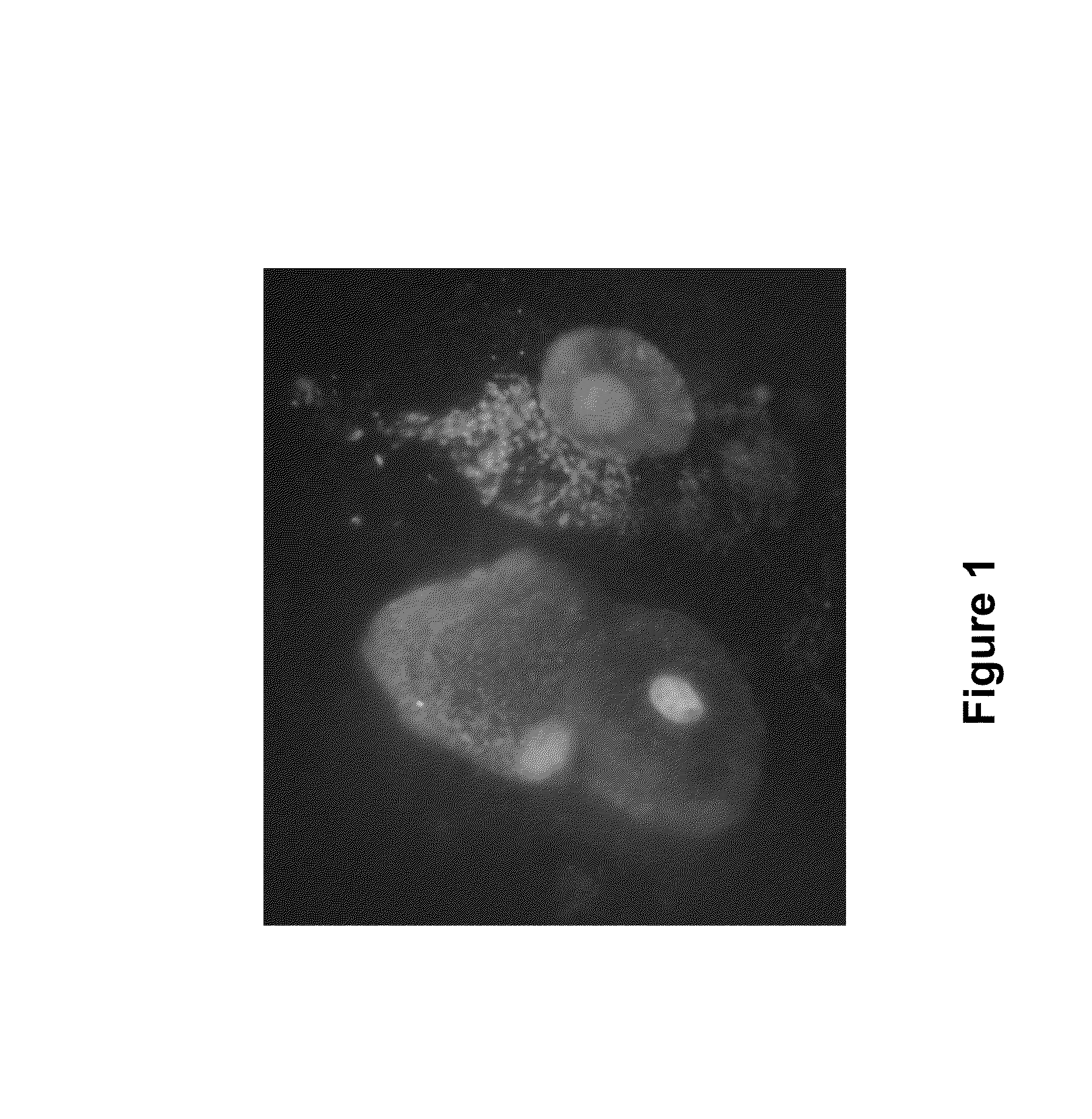Early marker of proteinuria in patients treated with an Anti-vegf treatment
a proteinuria and antivegf treatment technology, applied in the field of early marker of proteinuria in patients treated with antivegf treatment, can solve problems such as renal toxicity, and achieve the effect of avoiding unnecessary cessation of anti-vegf therapy
- Summary
- Abstract
- Description
- Claims
- Application Information
AI Technical Summary
Benefits of technology
Problems solved by technology
Method used
Image
Examples
example 1
A Case of Podocyturia in a Patient Receiving Anti-VEGF Therapy with Sunitinib
case study
[0034]A 67 year old female presented with a 7.2×6.1 cm mass involving the central and lower portion of the right kidney. Renal function was normal with a creatinine of 1.0 and no proteinuria. She subsequently underwent a right radical nephrectomy and retroperitoneal lymphadenectomy. Pathology confirmed Grade 2, T2, N0, M1 renal cell carcinoma, clear cell type. Sunitinib therapy was initiated, with good response.
[0035]Four months into therapy, renal function worsened with a peak creatinine of 1.5 and 467 mg of protein in 24 hours. Angiotensin receptor blockade with Diovan was initiated. Additional side effects included hypertension, hand and foot syndrome, and drug-induced hypothyroidism.
[0036]After seven months of therapy, her creatinine improved to 1.3 but she remained proteinuric, with a predicted 24 hour protein of 931 mg. At that time, a podocyturia assay was performed as described below and the presence of urinary podocytes was confirmed (FIG. 1).
Detection of Podocytes
[0037]A r...
example 2
Podocyturia in Patients Treated with VEGF Blocking Therapy for Cancer
[0041]The following was performed to determine whether podocyturia is present in patients who, while undergoing anti-VEGF therapy, develop proteinuria (Table 1). In addition, urinary podocyte excretion was compared among patients on anti-VEGF therapy with proteinuria ranging from 101 to 9720 mg / d (Table 1).
TABLE 1Anti-Type of CancerAge / SexVEGFGFRProteinuriaCells / HPFCholangio68 / FB66 420 mg / d0Renal Cell60 / MS / nib39 101 mg / d1Colorectal55 / FB1371 + dipstick1Colon66 / FB + S / nib77 330 mg / d0GBM59 / FB + S / nib78 152 mg / d1Renal Cell73 / MB632144 mg / d>3Renal Cell67 / FSunitib432112 mg / d>3SBC68 / MB596361 mg / d>3GBM70 / MS / nib709720 mg / d>9GBM: glioblastoma multiforme;SBC: small bowel carcinoid;B: bevacizumab;S / nib: sorafenib;HPF: 400x high power field.
[0042]These results demonstrate a higher degree of podocyturia in patients undergoing anti-VEGF therapy with proteinuria in excess of 2 gr / d compared to those treated with the same agents and...
PUM
| Property | Measurement | Unit |
|---|---|---|
| body weight | aaaaa | aaaaa |
| body weight | aaaaa | aaaaa |
| time | aaaaa | aaaaa |
Abstract
Description
Claims
Application Information
 Login to View More
Login to View More - R&D
- Intellectual Property
- Life Sciences
- Materials
- Tech Scout
- Unparalleled Data Quality
- Higher Quality Content
- 60% Fewer Hallucinations
Browse by: Latest US Patents, China's latest patents, Technical Efficacy Thesaurus, Application Domain, Technology Topic, Popular Technical Reports.
© 2025 PatSnap. All rights reserved.Legal|Privacy policy|Modern Slavery Act Transparency Statement|Sitemap|About US| Contact US: help@patsnap.com

